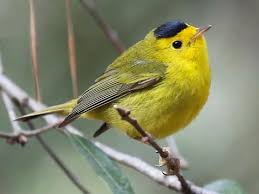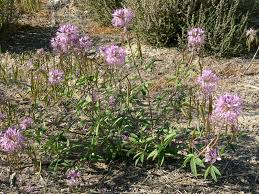It hadn’t been a good start to the month. Record-setting wildfires continued to ravage the West, filling social media outposts and people’s lungs with an orange haze. If you had a crystal ball, you’d know that Supreme Court Judge Ruth Bader Ginsburg would die the next weekend. The global pandemic hadn’t disappeared.
The September calendar had no more slots for bad things, it seemed.

Researchers found hundreds of dead swallows in a small area in New Mexico after the early-September cold snap and snow.
So when people in Chaffee County started plucking dead birds from their yards in early September after the record-setting snowfall and precipitous cold snap throughout the region, they tended toward cheerless and macabre comments: What could possibly be next? Is there an upside to finding 40 dead birds on one’s property?
Kind of, actually. If you talk to somebody who found several hundred Violet-Green Swallows in a 60-foot radius, that makes the 40 birds seem a little less, well, less. And the snow tamped down some of the fires in Colorado, at least for a bit, so there was that.
People are still talking about the mass migratory bird die-off that has swept through the Southwest. In Chaffee County, people reported seeing 20 dead birds at a time (before they stopped counting) from Buena Vista down to Salida. The birds were mostly Wilson’s Warblers with a smattering of others, including two small Flammulated Owls, according to Sally Waterhouse, a retired professor of zoology, lifelong birder, and point person for Greater Arkansas River Nature Association (GARNA).
She says people in the San Luis Valley saw mostly dead swallows. In either case, it was a matter of migrant insectivores not getting enough to eat, she says. The sudden cold and precipitation wiped out flying insects and the wet snow stressed the birds further.
Birders will tell you that migration is tough on birds without bizarre weather events entering the picture. Birds, which might fly hundreds of miles in a night, need a certain level of body fat and fitness to make the trip, and they need reliable food en route.
“The jury’s still out as to a total cause… whether the smoke had anything to do with it,” she says. “But in general, the birds were starving.”

Violet Green Swallow. Both this swallow, Cliff Swallows and Tree Swallows nest throughout Chaffee County in the summertime. Image courtesy of Wikipedia.
Bird experts are saying that the wildfires across the Western U.S. certainly haven’t helped with this year’s migrations. The fires and smoke, in addition to destroying habitat, can disrupt travel patterns and send birds – who may not be fit enough to safely travel – to places where they may not find enough food.
The bird experts I spoke with all had a more dire message. This is related to climate change, which is causing bigger, weirder events more often. In this case, it appears to be a single weather event that prompted starvation and the die-off. But climate change is an underlying factor for historic droughts, fires, hurricanes, and record-breaking cold snaps.
Jenna McCullough is a third-generation bird watcher and third-year Ph.D. student at the University of New Mexico and Museum of Southwestern Biology in Albuquerque who is studying bird evolution in the South Pacific. I don’t know if it is possible to be more captivated by birds than McCullough appears to be; she confesses that work, vacations, and most of her conversations center on birds. She dreams about them.
Her email was flooded with inquiries shortly after the American Birding Association published a piece she wrote on her experiences with the recent die-off. She had been talking to reporters for much of the day when we spoke and didn’t seem to be running out of steam.
Like a lot of places in Colorado, Albuquerque hit weather records, none of them in favor of birds. The airport there measured wind speeds of 70 mph and temperatures hit 100-year lows.
The reports started coming in, among them news of 300 dead birds found by researchers from New Mexico State University and the nearby White Sands Missile Range.
“It was soon apparent that a significant mortality event had occurred,” she wrote.
McCullough and a fellow Ph.D. student, Nick Vinciguerra, had gotten word of a particularly noteworthy turn of events that involved dozens of dead swallows in an arroyo in Velarde, just north and east of Española. Responding to a video that was shot Sept. 13, they traveled to the area and hiked into a place along the Rio Grande.
In a 60-foot radius, they found the carcasses of 258 Violet-green Swallows, 35 Wilson’s Warblers, six Bank Swallows, two Cliff Swallows, one Northern Rough-winged Swallow, a McGillivray’s Warbler, and two Western Wood-Pewees. Three-hundred and five birds dead, in total.
She examined many of the birds and says their fat stores were severely diminished; the stressed, migrating birds stopped in New Mexico to find few available insects and extreme weather. In other words, they died of starvation and hypothermia.
The carcasses have been donated to the Museum of Southwestern Biology. As an aside, McCullough encourages people to collect carcasses if they’re fresh. Place them in Ziploc bags, noting the location and date, and freeze them. Then inquire with the nearest large nature museum to see if they might want the birds.
“Birds have a second life in the museum,” she notes.
It should be noted that bird die-offs aren’t unprecedented. They happen for any number of reasons, and we are hearing about them a lot more these days thanks to the immediately available information.
But there are trends that are extremely disturbing. I spoke with Adam Beh, executive director of the Central Colorado Conservancy, and he pointed to last year’s bombshell report in the journal Science, which highlighted a major study by the Cornell Lab of Ornithology. In short, wild bird populations in the continental U.S. and Canada have declined almost 30 percent since 1970. That’s 2.9 billion birds in 50 years.
Yikes. When asked for some feel-good information, Beh said there are quite a few things we can do here in Chaffee County to support resident and migrant bird populations. One of them is to check out Audubon’s native plants database and to make some additions to our backyard habitats.
I pulled up the site and now have a list of seeds to buy, many that will be going into the ground this fall. A lot of seeds do well to experience freezing and thawing before they come up in the spring.
Another thing Beh says: Go to community meetings. Get in the know about what’s happening with the environment.
Dominique Naccarato, executive director at GARNA, says we need to think about plants for insects, and that many times those plants are also nutrient-dense for birds. Sunflowers, for example. She also mentions the Rocky Mountain bee plant, milkweed, and Mexican blanket flower as good local plants.
If it snows, she says, knock it off your flowers to make them accessible. And when you’re landscaping, remember that dead trees – standing snags and fallen logs – provide critical habitat for insects, birds, and other wildlife.
The people I spoke with see nothing wrong with feeding birds in the winter – if it doesn’t contribute to bear and other wildlife issues. Waterhouse, though, stresses that feeders need to be kept clean, lest they contribute to things like mites. She also says that water supply is quite important for birds and that heated, ice-free waterers can be extremely helpful in winter.
And McCullough has some opinions that a lot of cat lovers don’t want to hear. Keep Fluffy and Tabby inside. “Don’t let your cat be a predator,” she says. “I would say cats are one of the most invasive species.”
Waterhouse tells me that GARNA is a good place to start if you want to learn more about birds. They’ve started up bird walks again with social distancing in mind, and while Chaffee County has tons of seriously experienced bird watchers, she ensures me that everyone is low key and it’s fine to be a beginner.
She also says that if you find dead birds, GARNA often likes to know about it. Call 719-539-5106.
"bird" - Google News
September 30, 2020 at 03:02AM
https://ift.tt/2GmlIwS
Bird die-off a good prompt for seed catalogs, wandering in the outdoors - by Tara Flanagan - The Ark Valley Voice
"bird" - Google News
https://ift.tt/2s1zYEq
https://ift.tt/3dbExxU
Bagikan Berita Ini

















0 Response to "Bird die-off a good prompt for seed catalogs, wandering in the outdoors - by Tara Flanagan - The Ark Valley Voice"
Post a Comment